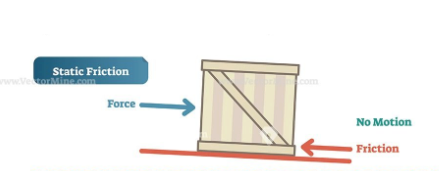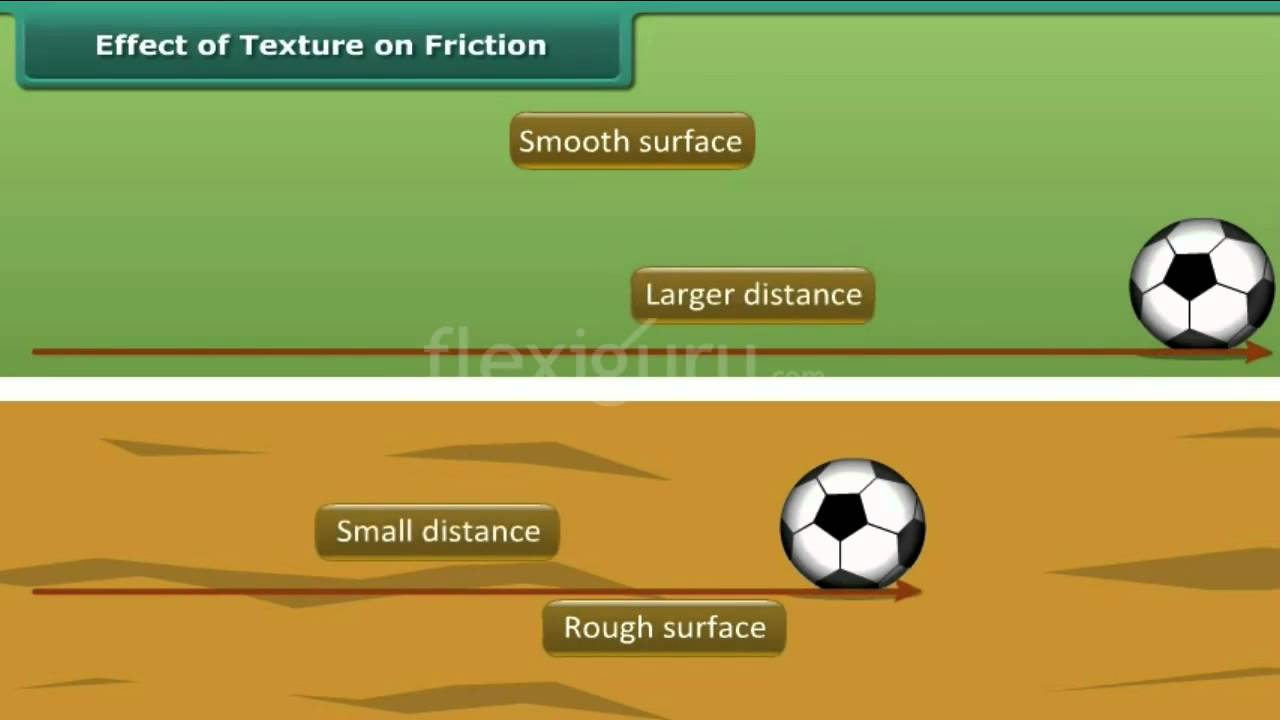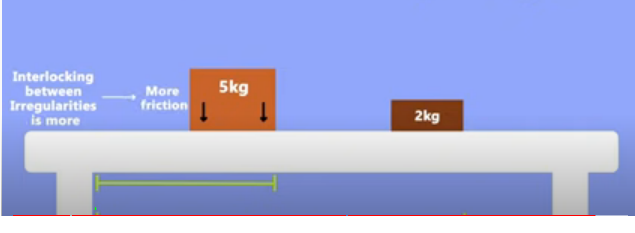Friction - Definition, Types of Friction, Applications, FAQs
The concept of friction is very important in our daily lives, friction makes our lives easy as well as tough. If we push a glass on the table with a certain initial velocity, it eventually comes to rest. What is the reason why glass stops after a certain velocity? Aristotle said every moving object should come to rest and Galileo said but what is the reason that a moving object comes to rest there is something that stops the object. A force that stops the moving object after a certain distance. This is friction, It is a force. Meaning of the friction is the resistance represented by a single force.
JEE Main/NEET 2027: Physics Important Formulas for Class 10
NEET 2025: Mock Test Series | Syllabus | High Scoring Topics | PYQs
JEE Main: Study Materials | High Scoring Topics | Preparation Guide
JEE Main: Syllabus | Sample Papers | Mock Tests | PYQs

What is Friction?
So, the Definition of friction is the opposing force that comes into play tangentially between two surfaces so as to destroy the relative motion acting between two surfaces is called friction. Whenever the surfaces of the body slide over the surface of another body each body exerts the frictional force on the other which is parallel to the surface in contact. It is always opposed to relative motion. Friction produces heat, sound or both.
Examples of Friction
The frictional force is one of the most important forces responsible for various daily life activities:
- Writing on paper
- Walking on the road
- Motion of vehicles
- Brushing of teeth
- Working of eraser
- Flying of kite
- Cutting vegetables or fruits
- Flying of birds or aeroplanes
Also read -
- NCERT Solutions for All Subjects
- NCERT Notes For All Subjects
- NCERT Exemplar Solutions for All Subjects
Types of Friction
Static friction: When we apply a small horizontal force F, the block does not move. The friction force that comes into play when a body is just about to start ( but the body is not moving ) over the surface of another body is called static frictional force.

If F is applied force on the body and the body remains at rest then static friction
- If there is no force acting on a body and the body is at rest then
- It is a self-adjusting force. ( means it changes itself by the applied force).
Limiting friction: The maximum value of the static frictional force which comes into play when a body just begins to slide over the surface of another body is called limiting frictional force.
- The force of friction is tangential or parallel to the surface in contact and its direction is opposite to the direction in which the body would start moving.
- For the given surfaces, the limiting frictional force f is
where
The coefficient of static friction is defined as the ratio of limiting friction to the normal reaction.
The coefficient of static friction is defined as the ratio of limiting friction to the normal reaction.
The static friction is greater than zero and smaller than limiting friction.
kinetic friction: When the motion starts the frictional force acting between the surfaces decreases so that the smallest force f is equal to maintain uniform motion. The force acting between the two surfaces in relative motion is called the Kinetic frictional force fk. It is less than the limiting friction because once the motion starts block can easily move and there is less friction force. It is proportional to the normal reaction R.
Related Topics |
Types of Kinetic Friction
There are two types of kinetic friction
- Sliding friction: When two objects are sliding over one another, the friction between them is called sliding friction. For example, a block is sliding over a horizontal surface, or figure skates.

- Rolling friction: The opposing force that comes into play when a body, such as a wheel, disc, or cylinder rolls over a surface. It is a common experience that much less effort is needed to roll a drum of coal tar than to drag it along over a surface. It means that rolling friction is much less than sliding friction because a very small portion of the rolling object comes in contact with the ground at any instant and this portion is momentarily at rest. Hence no work is done against friction. This is the reason why vehicles run on wheels.

Rolling friction is directly proportional to the normal reaction R and the load and inversely proportional to the radius of curvature. Consider the formula:
where
Related Terms
- Work done by the frictional force is always negative by its definition.
- Internal friction: Internal friction is an opposing (internal) force that comes into play when there is the movement of particles in the material.
- Define cone of friction: If the resultant reaction rotates about the normal reaction force, it will form a cone, called a cone of friction.
- Surface friction: Surface friction is the opposition to the airflow that has motion along the earth’s surface.
Factors Affecting the Friction
- Friction depends on the surfaces in contact, it depends on the nature of the surface on their roughness (or smoothness).

- The frictional force depends upon the irregularities interlocking between the surfaces in contact.
- In Fig, there are two blocks of the same material and mass of 2kg and 5kg placed on the same surface. Now we applied the same force on both blocks. The lighter block goes the farthest distance, it covers more distance than the heavier one. It tells us friction depends upon the force with which the two surfaces are pressed together. If two surfaces are pressed harder the friction will be more. Because of the block of heavier weight, it presses on the table with greater force. Since the surface of the block and the surface of the table are pressed together harder and the irregularities between the surfaces are more that causes more friction. So force with which two surfaces are pressed together.

Application of Friction
In our daily life, there are many applications of friction. Friction makes our lives easy and also makes our lives difficult.
- Walking is possible due to friction.
- Two bodies stick together due to friction.
- Brakes work on the basis of friction.
- Writing is not possible without friction.
- The transfer of motion from one part of the machine to another part through the belts is possible by friction.
Frequently Asked Questions (FAQs)
We cannot have zero surfaces. We can only reduce the friction but we cannot reduce it to zero. It is not possible.
Given: F = 98N
The block is on rest then fs = F = 98N
μs = fs / R = fs/ mg
μs = 98N/ 20kg* 9.8ms^-2 = 0.5
No doubt friction opposes the motion of a moving body but it also causes the motion.
(i) In walking, a person pushes the ground backward
( action) and the rough surface of the ground reacts and exerts a forward force due to friction which causes the motion.
- Friction causes wear and tear of the parts of the machinery in contact. Thus their life is reduced.
- Friction force results in the product of heat, which causes damage to machinery.
- By polishing
- By lubrication.
- By proper selection of material.
Also Read
21 May'25 12:19 PM
05 Feb'25 04:38 PM
11 Jan'25 03:12 PM
03 Dec'24 04:00 AM
03 Dec'24 03:48 AM
29 Nov'24 11:10 AM
28 Nov'24 01:12 AM
27 Nov'24 11:57 PM
27 Nov'24 02:41 PM
27 Nov'24 02:15 PM

